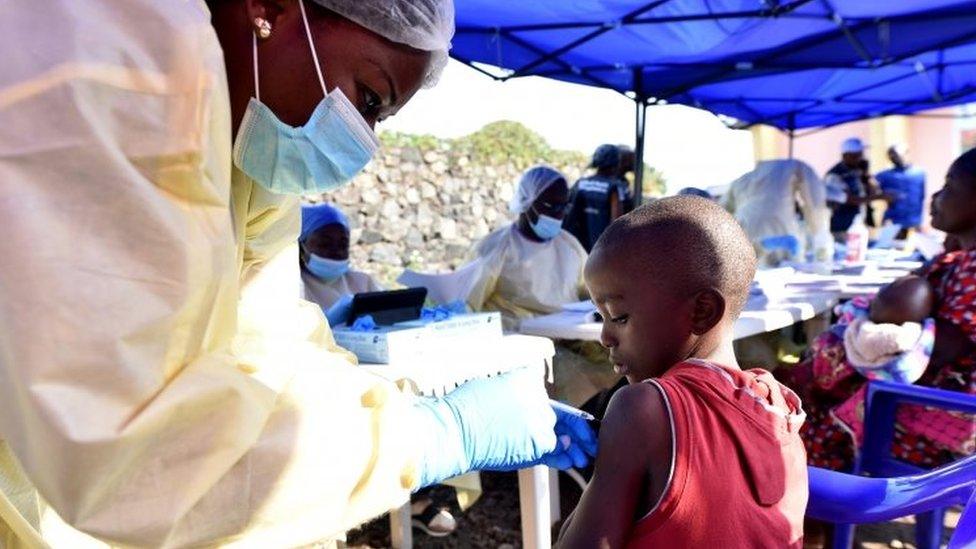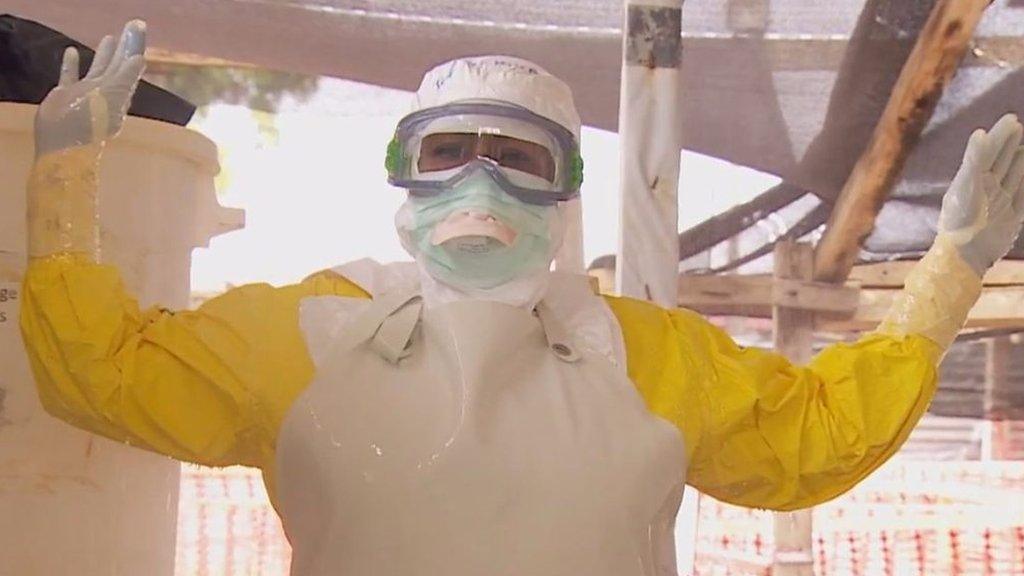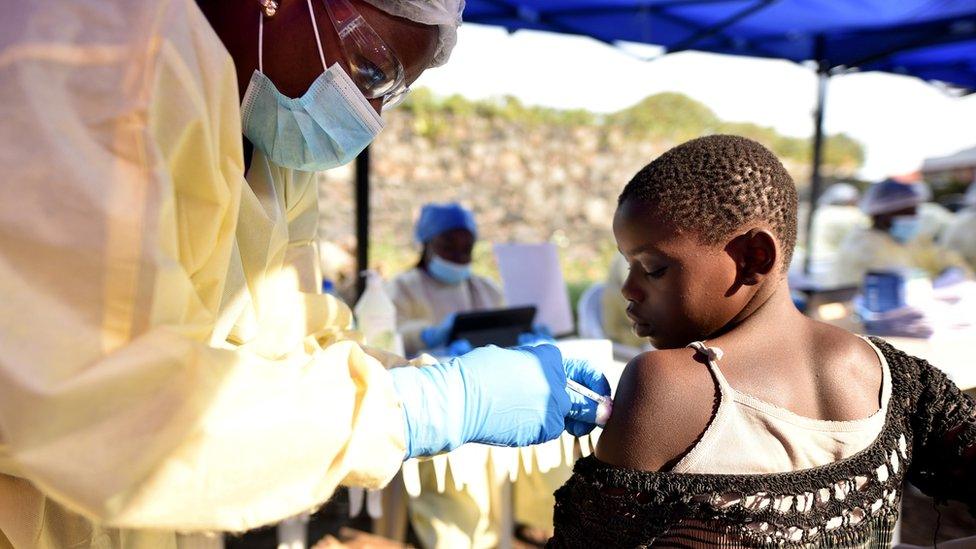Half of Ebola cases in DR Congo 'unidentified'
- Published
A year since an Ebola outbreak was declared in DR Congo, medics are still trying to control the disease
Only about 50% of cases of Ebola in the Democratic Republic of Congo are being identified, the government's response co-ordinator has said.
Jean-Jacques Muyembe warned that the current deadly outbreak could last up to three years.
He said a man who died this week in the city of Goma, on the Rwandan border, had 10 children and had infected a number of people.
The Ebola outbreak has killed more than 1,800 people in the past year.
At least 2,700 people have been infected in the worst Ebola outbreak in the DR Congo's history.
Tackling the disease has also been complicated by conflict in the region.
Earlier this week, Rwanda briefly closed its border with the DR Congo amid fears the disease would spread to the country.
What did Mr Muyembe say?
Speaking in Goma on Friday, Mr Muyembe said more needed to be done to tackle the outbreak, as an estimated half of Ebola cases were going unidentified.
"If we continue on that basis, this epidemic could last two or three years," Mr Muyembe warned.

Health authorities have been administering the Ebola vaccine in Goma
Speaking about the latest victim in Goma, a gold miner, he said that the man "will have contaminated several people".
"But for the moment it is only his wife and one of his 10 children who are sick," Mr Muyembe said.
He added that the miner's sister had travelled to South Kivu province, but was quickly located and brought back to Goma.
Cases in the city earlier prompted the World Health Organization (WHO) to declare the outbreak as an emergency of international concern.
What is the situation on the ground?
Goma, home to two million people, is the capital of North Kivu, one of the two provinces in DR Congo which have borne the brunt of the epidemic.
The city lies just across the border from the Rwandan city of Gisenyi, which has a population of about 85,000 people. Many residents cross the frontier for work and other activities, although illegal routes are also used.

Efforts to control the outbreak have been hampered by violence against healthcare workers and Ebola treatment facilities. Seven people have been killed and 58 injured in 198 attacks this year.
A major problem has been the distrust of healthcare workers. As a result, about a third of Ebola deaths have not been at specialist treatment centres but in the community, where there is a greater risk of the disease spreading to neighbours and relatives.
The world's worst Ebola epidemic killed more than 11,000 people in West Africa between 2014 and 2016.
What is Ebola?

Ebola is a virus that initially causes sudden fever, intense weakness, muscle pain and a sore throat
It progresses to vomiting, diarrhoea, and both internal and external bleeding
People are infected when they have direct contact through broken skin, or the mouth and nose, with the blood, vomit, faeces or bodily fluids of someone with Ebola
Patients tend to die from dehydration and multiple organ failure
Is there no vaccine?
Yes, there is. It is 99% effective and more than 161,000 people have received it.
However, not everybody is vaccinated - only those who come into direct contact with an Ebola patient, and people who come into contact with them. And some of those people refuse to take it.

Health workers wear protective gear to mix water and chlorine in Goma, where two people have died
People give a variety of reasons for not taking the vaccine, including:
They may have religious beliefs that do not permit them to take vaccines
They may think they do not need it
They may not believe in Ebola
The vaccine, made by Merck, was developed during the epidemic in West Africa and has been available throughout the latest outbreak.
It has proven effective but is in relatively short supply, so the WHO has recommended a second vaccine made by Johnson & Johnson to complement it.
- Published1 August 2019

- Published17 July 2019

- Published18 July 2019
